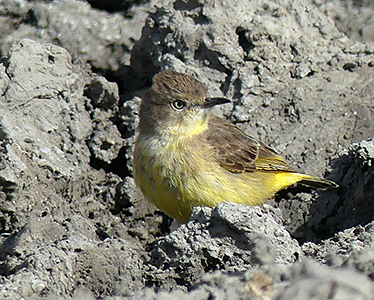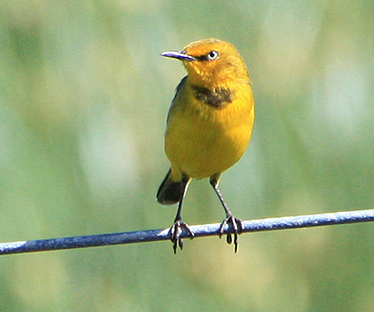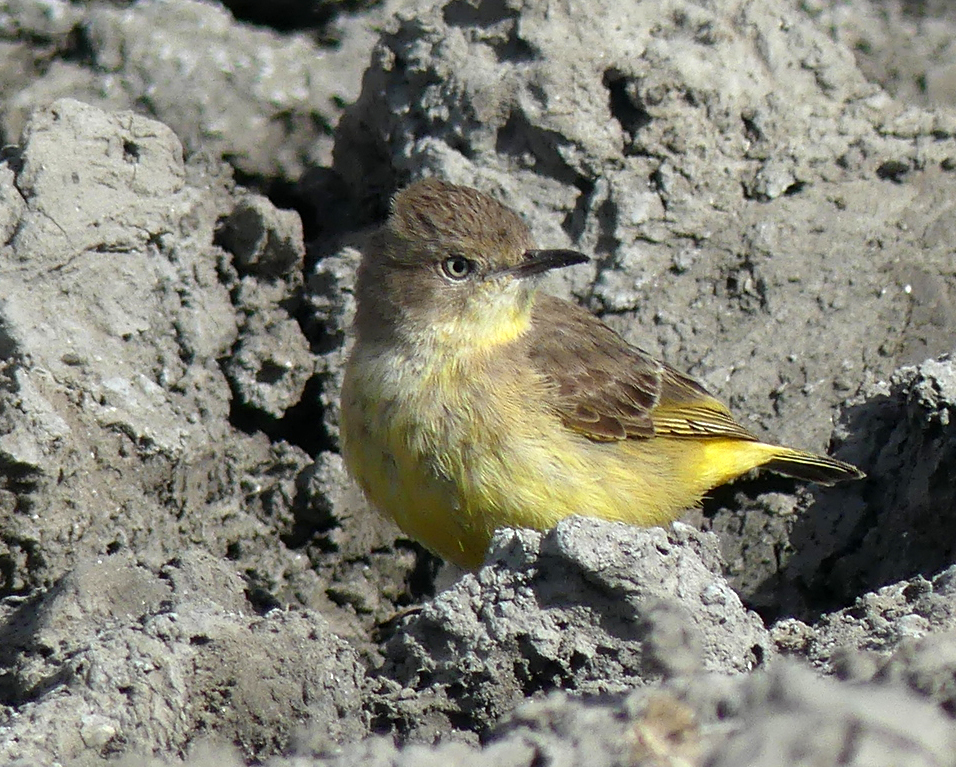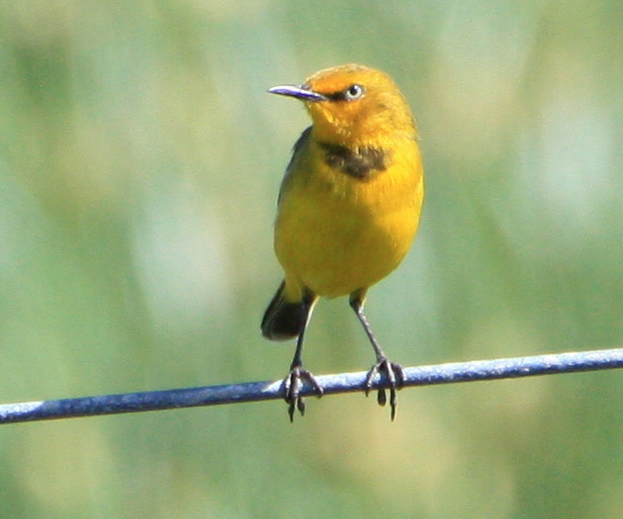Capricorn yellow chat
Conservation efforts for cheerful Capricorn yellow chat
Despite the Capricorn yellow chat’s bright appearance, it faces threats from habitat and climate changes. Learn how we are working to protect its future.

Fast facts
Common name: Capricorn yellow chat, yellow chat (Dawson)
Scientific name: Epthianura crocea macgregori
Family: Meliphagidae (honeyeaters)
Status: Endangered
Habitat: Marine plains of central Queensland. Most of its habitat is less than 5 metres above sea level on the threshold of the highest annual tides.
Species overview
The Capricorn yellow chat is one of Queensland’s rarest endangered birds. Native to the Capricorn Coast region, it was once thought to be extinct until a small population was found in 1991.
It shares the traditional Country of the Darumbal People and the Bailai, Gurang, Gooreng Gooreng and Taribelang Bunda People and is a culturally significant species.
The Capricorn yellow chat is a small, lively, and colourful bird, weighing only about 10g. It can be identified by its vibrant yellow plumage and melodious calls, including chirps and whistles for communicating and defending their territory.
The Capricorn yellow chat population is estimated to be only 200–300 birds. It lives in three small and isolated locations—Curtis Island Conservation Park, the Broad Sound region and the Fitzroy River delta.

Ecology and behaviour
The Capricorn yellow chat plays an important role in maintaining the health, function and resilience of the wetland ecosystems it calls home and its conservation is vital for preserving Queensland’s biodiversity.
It lives mostly in coastal areas below or just above sea level and forages for insects and seeds in open grasslands, shrublands and coastal dunes.
The Capricorn yellow chat predominantly breeds in spring and summer, following rainfall and the freshwater inundation of the marine plains, which triggers food abundance.
Characteristics
The male Capricorn yellow chat is a small, mainly yellow bird that has:
- a golden yellow head
- an olive back
- a 4–6mm black band across the chest
- less colour and definition when these birds are not breeding.
The female Capricorn yellow chat has:
- a yellow crown, grading to an olive back, golden rump and vent (an opening just below the tail)
- a paler colour, with a white throat when these birds are not breeding.
Threats
- Small population size
- Water regime changes
- Habitat loss and modification
- Introduced predators such as feral pigs, cats, foxes and wild dogs
- Introduced plants, such as para grass
- Inappropriate grazing
- Climate change.
What’s being done?
In 2024, Queensland’s Capricorn yellow chat Recovery Action Plan was released. Protecting and restoring its natural habitat is crucial for its long-term conservation, along with managing the impact of climate change and introduced predators.
Recovery actions include:
- Maintaining the three populations and improving population trends so the Capricorn yellow chat can survive in the wild in the longer-term.
- Maintaining existing habitat critical to the species’ survival.
- Improving habitat condition for the species, including improving the availability of natural resources the bird needs to survive.
- Addressing knowledge gaps about the Capricorn yellow chat.
- Improving engagement of key stakeholders, including First Nations peoples who have Country that overlaps with the species’ habitat.
- Working with partners to undertake population and habitat condition surveys, feral pig and herbivore control and weed management.
Who is helping?
Conserving the Capricorn yellow chat is a collaborative effort. We’re working with several partners including Fitzroy Basin Association, BirdLife Capricornia and CQ University to undertake a range of activities across the species’ distribution.
Birdlife Capricornia is partnering with us and CQUniversity to identify and monitor populations, and identify ecology, breeding behaviour, threats and genetic relationships.
The university has been researching the species since 2003 in partnership with us and local conservation groups.
With Australian and Queensland Government funding, the association has helped to support population surveys and pest animal control programs to protect the bird’s habitat.
The rangers help to conserve, manage and monitor many threatened species, including the Capricorn yellow chat, in the Sea Country region of the Port Curtis Coral Coast.
How you can help
- Make a donation to support Queensland threatened species protection and science and research-based initiatives.
- Find out more about how you can help support threatened species efforts.

